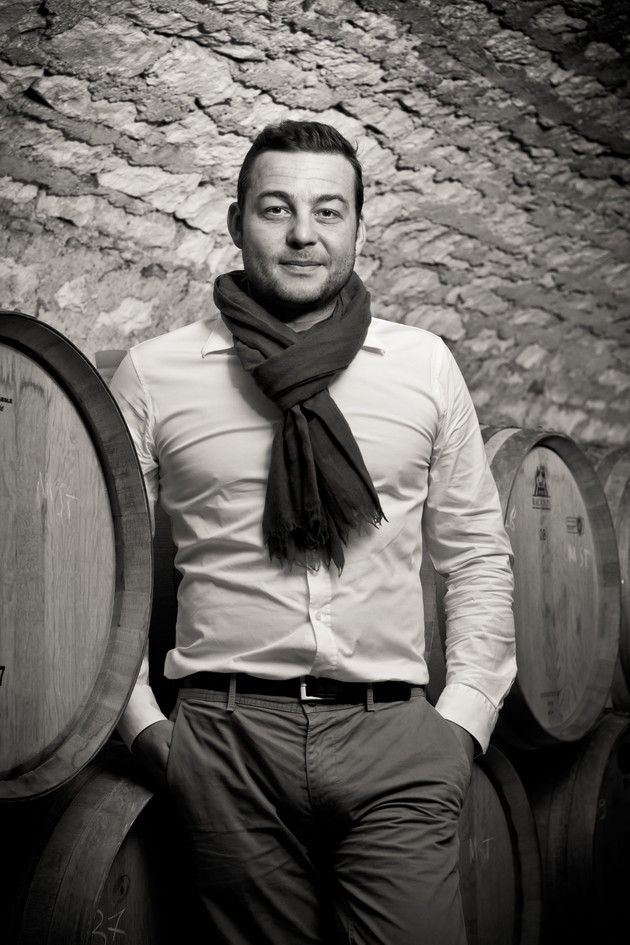Laroche winemaker Grégory Viennois on a new dawn for Chablis, the difficult 2013 vintage and price changes
Grégory Viennois, the outspoken winemaker and technical director at Domaine Laroche (owned by the Advini group), was in London to present the 2012 vintage of his Chablis premiers and grands crus and hold a master class on the different crus on the right and left bank of the Serein river. Anne Krebiehl caught up with him afterwards: he sees the dawn of a new era for Chablis, reflects on the difficult 2013 vintage and price developments.
Harpers: You said you "liked the notion of time" in winemaking. You also spoke out against many "oenological" Chablis bottlings on the market - your way of saying that these are rushed wines, sped up by enzymes and yeasts, with odours of sulphur dioxide masquerading as 'terroir'.
GV: We don't use a lot of oenological aids and products. We try to take the best way between tradition and research and development, thus we have a long press cycle to extract all the good matter in the skin, phenolic compounds and dry extract - that's why we don't use any enzymes and very little sulphites. We take time to ferment and age our wines. That's why I think there should be a clear difference between us and other producers. [Viennois believes that the phenolic matter residing in the skin, released very gently during a low-pressure but rotating whole-bunch press cycle, gives the wines structure and longevity.]
Harpers: You also said that for Chablis AOC vintage does not matter. You are only just releasing the 2010 vintage of your premiers crus onto the UK market - while most Chablis drunk today in London is the 2013 vintage.
 Domaine Laroche winemaker Gregory ViennoisViennois believes grand cru Chablis should not be rushed, but allowed to age.
Domaine Laroche winemaker Gregory ViennoisViennois believes grand cru Chablis should not be rushed, but allowed to age.
GV: I think there is a difference between Chablis, Chablis premier cru and Chablis grand cru. The markets are not the same and I think for a connoisseur they are a great alternative to other great white wines of the world, this is why we have to take the time to make the best wines we can. I think we showed you the complexity and that Chablis premier and grand crus are great wines. Especially for premier and grand cru we need time for fermentation and for ageing before bottling. After bottling we take one to two years in our cellar before releasing the wines onto the market. You can already find some 2013 Chablis premiers crus, for me that is too young.
Harpers: Can you see Chablis gaining more recognition in the face of sky-rocketing white Burgundy prices from the Côte de Beaune?
GV: Don't forget that Chablis is in Burgundy - it's another kind of Burgundy. I don't think I want to make a direct comparison because Chablis already has a very good place in the market, I think it could be a good alternative because we have the chance to show the difference in our sites, just like you have Les Pucelles in Puligny-Montrachet, we have Montmains or Les Clos - but we have a lot of work to do to explain this to our customers and to sommeliers. I think we are at the beginning of a new era for Chablis. We are lucky because we don't have too much alcohol and good balance of acidity and it's easy to understand the difference between these various sites. This is what we try to do. [Indeed, the differences between the crus were distinct and showed a wide spectrum: from gracefully slender and linear premier cru Vaudevey to rounded, rich and almost opulent premier cru Vaucoupins.]
Harpers: With the difficulty of the 2013 vintage and its low yields can we expect further price increases?
GV: 2013 was a very hard vintage because of the conditions during flowering and poor conditions at the beginning of September so we had to sort a lot in the vineyard, sort a lot in the cellar. In the end we had around 30hl/ha for Chablis and around 15hl/ha for grand cru, that is not a lot. It's just the vintage impact. It's important to remember that we cannot control nature. We have been very lucky for the past 20 years with very normal crops in Chablis, 2013 was very hard. Yet, Chablis is still a lot more affordable than Côte de Beaune.




